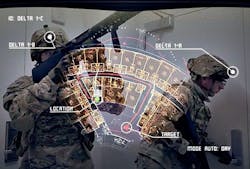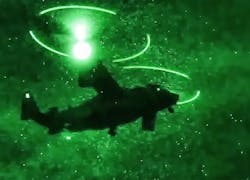Navy research eyes augmented reality, flight control, manufacturing, and aircraft aerostructures
Officials of the Office of Naval Research (ONR) in Arlington, Va., issued a special notice Tuesday (N00014-18-R-SN07) for the Catapult Challenge project, which is making $2 million available for Navy and Marine Corps science and technology research and development.
Advanced manufacturing involves technologies for systems repair, 3D printing, and cyber physical security for digital manufacturing. Flight dynamics control involves advanced control architectures, scaled flight experiments, linear and non-linear control law synthesis, mathematical frameworks, advanced sensors and algorithms, advanced supervisory control, and advanced aerodynamic control.
Augmented reality involves automated ways to generate content and behaviors for use in mixed-reality technologies, interface schemes, adaptive training, occlusion reasoning technologies, and advanced optical or video-see through head mounted displays.
Aero-structural tailoring in advanced aircraft, meanwhile, involves structural and material optimization, aerodynamic control, computational structural and fluid dynamics, aerodynamic and structural interactions, and control law theory.
Related: Army reaches out to industry for ideas on augmented-reality training for NIE 15.1 this fall
ONR officials are trying to schedule one-on-one meetings with interested companies during the Catapult Forum and Expo, which will be 5 to 6 June 2018 at the Sandler Center for the Performing Arts, 201 Market St., in Virginia Beach, Va. Request a meeting by email ONR's Adam Zimet at [email protected].
When it comes to repair technologies, a key logistics driver is low-volume parts availability and obsolescence, as well as repair technologies for critical components that are no longer available or are hard to source.
To overcome these challenges, ONR experts are looking for repair technologies that use digital manufacturing approaches for solid-state repairs that minimize residual stress and part distortion, repair portability for in-situ or depot level repairs, and applicability across a large range of materials.
For 3-D printing, ONR researchers want the ability to fabricate structures from dissimilar materials for structural and functional performance.
For cyber physical security in digital manufacturing, researchers want the ability to connect data from fabrication through an asset’s life cycle in a digital data flows across traditional domains. This could involve new methods for authenticating digitally manufactured parts, and new tools for digital manufacturing.
Flight dynamics control for Navy helicopters and fixed-wing aircraft would involve:
Navy researchers are interested in augmented reality technologies to improve training and operations for infantry at the small unit level. It involves simulating environments, assets and effects, friendly and opposing forces, and adaptive training to improve learning and situational awareness.
For this, experts are interested in automated methods for generating content and behaviors in mixed reality; interfaces for quick and easy interaction with mixed reality; adaptive training to support calls for fire and close air support; and advanced optical or video see-through head-mounted displays.
Aero-structural tailoring for advanced aircraft involves aircraft structures to support carrier-based handling, maneuverability, weight, range, and payload. This includes shape and platform design, analysis and optimization of airframe structures, and novel control laws.
Research will focus on mechanisms for adaptive and tailored structures with predictive techniques for fatigue resistance, ease of manufacturing, power, and thermal management. ONR will award as many as eight research contracts for this project, each worth as much as $250,000.
Companies interested should email their ideas as white papers, charts, or videos no later than 10 June 2018 to ONR's Justin Zerbato at [email protected], with N00014-18-R-SN07 Catapult Challenge Submission in the subject line.
Email full proposals no later than 24 June 2018 to ONR's Justin Zerbato at [email protected]. More information is online at https://www.fbo.gov/spg/DON/ONR/ONR/N00014-18-R-SN07/listing.html.
Ready to make a purchase? Search the Military & Aerospace Electronics Buyer's Guide for companies, new products, press releases, and videos


